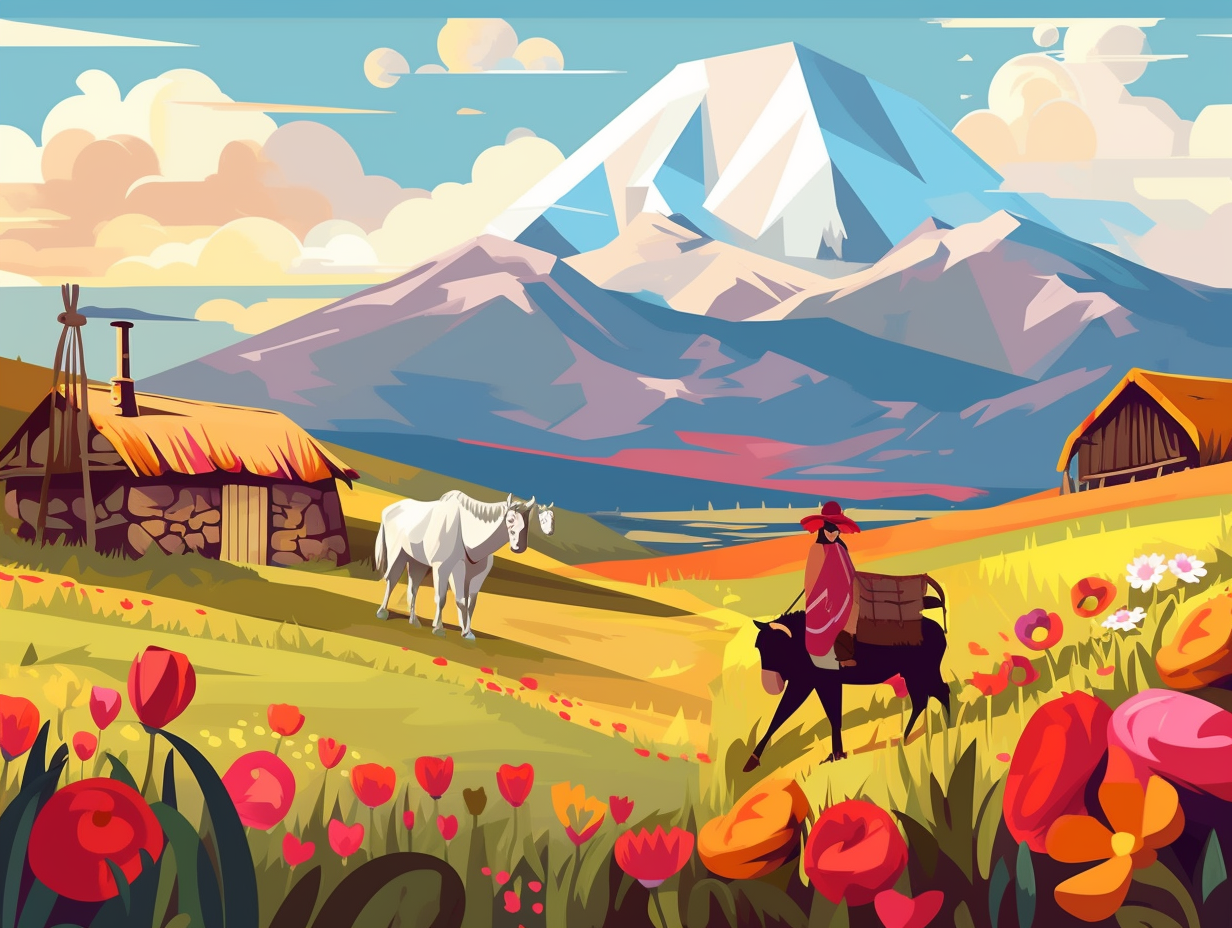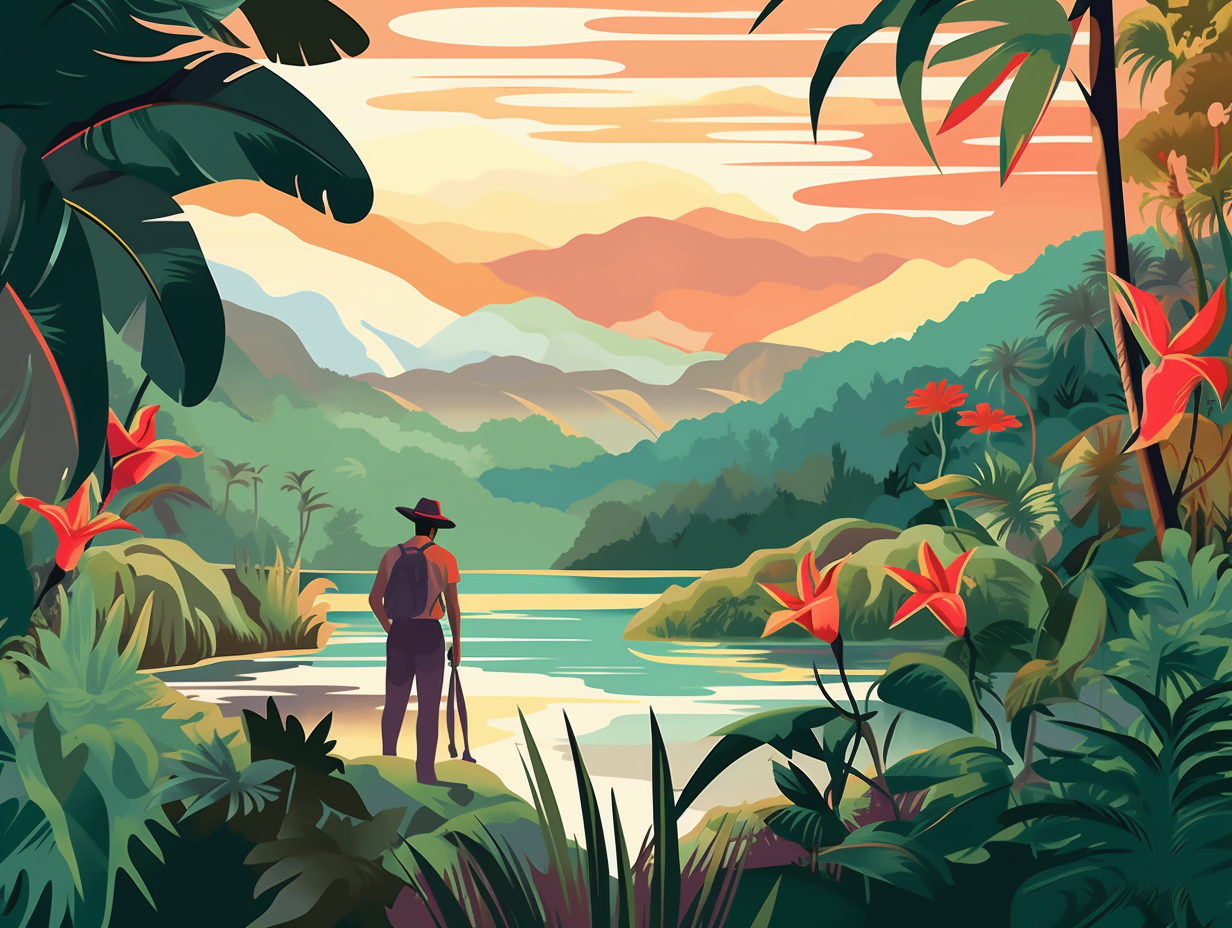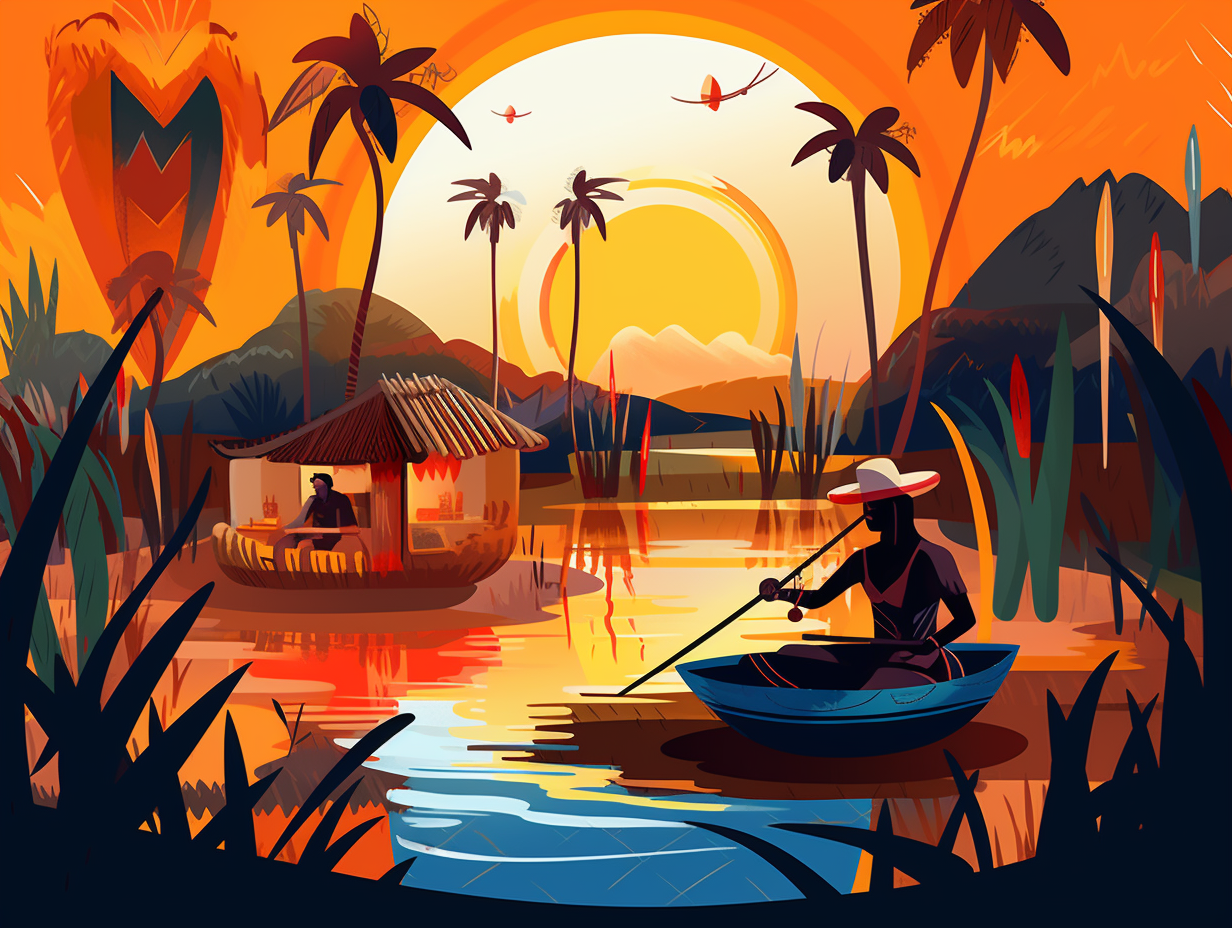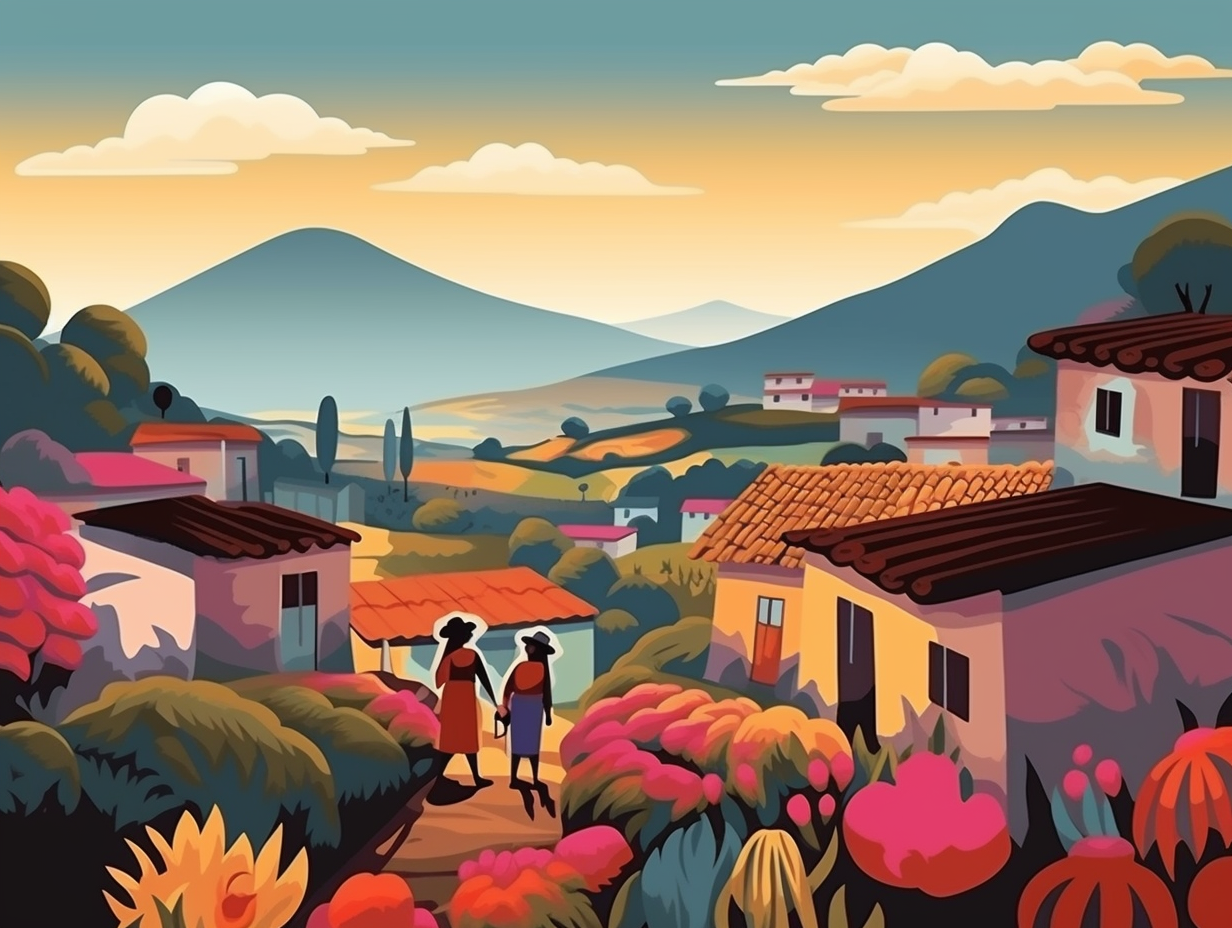Discover Ecuador: Top 17 Fascinating and Unique Fun Facts for Your Next Adventure

1. Chimborazo: Space's Mountain BFF
Chimborazo: the mountain that went through an identity crisis and went from "I wanna be the tallest!" to "Actually, I'm closer to space, so take that, Everest!": This intriguing Ecuadorian peak is not the highest in terms of elevation above sea level, but due to its location near the equator, it happens to be the furthest mountain from the planet's center and, thus, the closest peak to outer space, standing tall at 6,268 meters (20,564 feet).
Source => theguardian.com
2. Carnival: Ecuador's Wacky War
When life gives you lemons, make lemonade; When Ecuador gives you Carnival, prepare for a wild and wacky water, talcum powder, and flour war: During Carnival in Ecuador, various regions come alive with unique celebrations, such as Ambato's fruit and flower-adorned floats, Riobamba and Guaranda's special events, traditional liquor-fueled revelry, and carnival hymns that stretch from the high Andes to Afro-American cultural celebrations in Esmeraldas.
Source => zenithecuador.com

Did you know Peru is home to stylish Andean bears, known for their trendy eyewear-like markings and impressive tree-house-building skills? Discover more about these fuzzy lumberjacks and their fabulous neighbors now! 🐻🌳🕶️
=> Fun Facts about Peru
3. Pedro Soria: Ecuador's Siesta Master
Snoozing like a seasoned Spaniard, yet hailing from Ecuadorian lands: Pedro Soria Lopez, an Ecuador native, showcased his incredible talent to siesta, clinching the title at the first National Championship of Spain in 2010, despite Ecuador's lack of siesta tradition. With commendable dexterity, Pedro could snooze quickly and deeply during the 20-minute competition rounds.
Source => minikar.ru
4. Guinea Pigs: Multitalented Mountain Mammals
Who needs a Swiss Army knife when you have guinea pigs in Ecuador: These furry multitaskers not only serve as traditional food (known as cuy), but they're also kept as pets, used for medicinal purposes by herbal doctors, participate in shamanic healing rituals, and even act as status symbols—reflecting wealth in Indigenous communities where it's common to see them roaming freely in rural homes.
Source => juliadimon.com

5. Mitad del Mundo: Adorable Equator Blunder
When your plan to straddle two hemispheres falls a wee bit short, the universe gifts you with a close consolation prize: The actual equator line is located a short stroll away from the famed Mitad del Mundo monument at the Museum Intinan, making the original monument an adorable blunder but still deserving of your tourist attention for the interactive exhibits and captivating history.
Source => ecuadorhop.com
6. Galápagos Tortoises: Survivalist Champs
You know what they say, “Slow and steady wins the race... and survives the longest on a remote island”: The Galápagos giant tortoise has an astonishing ability to survive up to a year without food or water, all thanks to its slow metabolism and built-in water reserves. Each species even has unique adaptations based on their specific island, making them the ultimate island-hopping survivalist champs!
Source => gogalapagos.com
7. Hummingbirds: Tiny Feathered Matchmakers
When they're not busy dominating the cuteness Olympics or starring in your favorite animated films, these tiny feathered daredevils are hard at work playing matchmakers in the Ecuadorian wild: In fact, Ecuador hosts over 1,600 bird species, including a dazzling array of hummingbirds in the southern Andes whose unique pollination dance with tubular flowers ensures the thriving of many plant species that rely entirely on their long-beaked prowess.
Source => onlinelibrary.wiley.com
8. Ecuador's Swift Sunsets
Ecuador: where the sun has no patience for dilly-dalling in dramatic goodbyes at the day's end! Seriously though: sunrise and sunset times in Ecuador hardly change throughout the year due to its proximity to the equator, boasting an average sunset duration of just 24 minutes.
Source => worlddata.info
9. Cotopaxi: Hot-headed Mountain
Ecuador doesn't just have an explosive sporting fanbase, but it's also home to the world's tallest "hot-headed" mountain: Cotopaxi, standing proudly at 5,897 meters (19,347 feet) and nestled in the central Andean region, is the highest active volcano on Earth, where adventurers can ascend its snowy peaks or wander through the magnificent Cotopaxi National Park.
Source => cometatravel.com

10. Ecuador's Currency Switcheroo
If you think keeping up with the Kardashians is a challenge, try keeping up with Ecuador's early currency changes: Ecuador went from peso and escudo coins minted during the Gran Colombia period to the introduction of the Franco in 1856 and later the silver sucre in 1884, reflecting the country's economic and political rollercoaster ride.
Source => en.wikipedia.org
11. Marine Iguanas: Rockstar Reptiles
In a land where iguanas trade their usual rock band stage-diving for an underwater ballet recital: Ecuador's Galápagos Islands boast an exclusive marine iguana species, which uniquely feeds on sea algae and demonstrates their amphibious abilities with impressive aquatic performances. Though rockstars in their own habitat, these protected, swimming sensations face threats from El Niño cycles, uninvited foreign predators, and disastrous oil spill soliloquies.
Source => en.wikipedia.org
12. Quilotoa: Liquid Gold Lake
Behold, the Lake Quilotoa: nature's very own pot of liquid gold nestled atop the Ecuadorian Andes, where llamas, vicuñas, and hikers alike revel in its breathtaking beauty! Here's the deets: This enchanting yet moody water-filled volcanic caldera stands high at 3,500 meters above sea level, holding an impressive 0.35 cubic kilometers of water. But local legends whisper about a slow, trickling retreat of the waters over time, with signs of travertine deposits chilling by the shore, 10 meters above the lake's 2000 level.
Source => en.wikipedia.org
13. Valdivian Traders: Shell Seekers
Ahoy there, shell we set sail on a mind-blowing voyage to the treasures of Ecuador's ancient Valdivian traders? Anchors aweigh, matey: These skilled seafarers crafted rafts with sails, connecting tribes in the Andes and the Amazon through a maritime trade network where Spondylus - the red shells of thorny oysters - was their prized booty, valued even higher than gold or silver!
Source => human.libretexts.org
14. Darwin's Galápagos Origins
Before Charles Darwin became the "Galápagos Godfather," he was just a young lad ditching his divine duties for a daring expedition aboard his trusty HMS Beagle: During this five-year voyage, Darwin explored not only the famous Galápagos Islands but also the coast of South America and several other islands, filling dozens of notebooks with his observations on animals, plants, and geology, all of which would lay the foundation for his groundbreaking scientific theories.
Source => amnh.org

15. Ecuador's Environmental Embrace
In a groundbreaking move reminiscent of Bambi's plea to spare Mother Nature, Ecuador extended a legal olive branch to our planetary home: In 2008, Ecuador became the first country to grant inalienable rights to the environment in its constitution, although the noble effort faces challenges such as an insincere president, a lack of standing doctrine, and a history of judicial corruption and dysfunction.
Source => digitalcommons.law.uw.edu
16. Ecuador's Potato-palooza
In a land where mashed potato varieties could populate a small city: Ecuador, along with Peru and Bolivia, is home to over 4,000 different kinds of native potatoes. These spud-tacular tubers thrive in high altitudes between 3,500 and 4,200 meters and are primarily grown without the use of agrochemicals. They are a colorful example of on-farm diversity and cultural heritage and are often traded or gifted during special occasions like weddings.
Source => cipotato.org
17. Concavenator: Dino Fashionista
In a Jurassic Park-like twist, the mountainous region of Ecuador hides the remains of a dino fashionista, sporting an enigmatic hump and accessorized with proto-feathers: Meet the Concavenator corcovatus, a 125-million-year-old, 6-meter-long carnivore unearthed in the Highlands of Cuenca. Once ruling the subtropical wetlands, this fabulous predator now wows the prehistoric fashion police at the Castilla-La Mancha Science Museum, while scientists continue to investigate its mysterious hump's purpose, likely linked to thermoregulation.
Source => ecuadortimes.net
Related Fun Facts




















